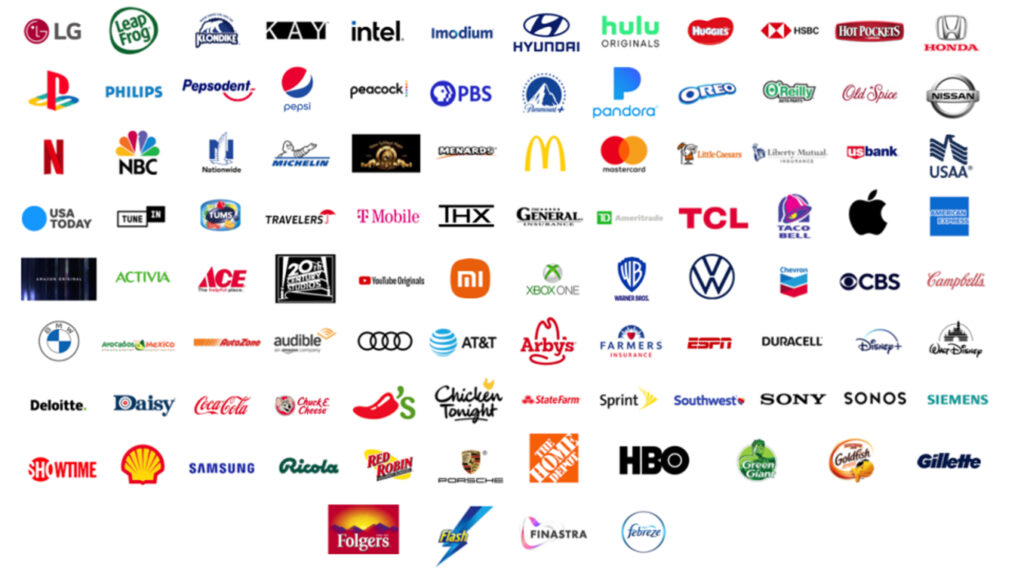
With its glamorous allure and captivating events, pageantry thrives on building connections with its audience. Understanding the dynamics of direct mail and digital marketing becomes crucial to achieving this.
Understanding Direct Mail Marketing
Direct mail marketing involves sending physical promotional materials directly to potential customers. In the pageantry industry, this could include flyers, brochures, or postcards highlighting upcoming events, contests, or exclusive offers.
Examples of Direct Mail Marketing
Exploring Digital Marketing
Digital marketing utilizes online platforms and technologies to promote products or services. In the pageantry industry, digital marketing strategies encompass social media campaigns, email marketing, website optimization, and more.
Examples of Digital Marketing
Benefits of Direct Mail Marketing for the Pageantry Industry
Direct mail marketing offers tangible benefits for the pageantry industry, including:
Benefits of Digital Marketing for the Pageantry Industry
Digital marketing presents numerous advantages for the pageantry industry, such as:
Combining Direct Mail and Digital Marketing Strategies
By combining direct mail and digital marketing strategies, the pageantry industry can leverage the strengths of both mediums for maximum impact.
Case Studies of Successful Integration
Several pageantry organizations have successfully integrated direct mail and digital marketing strategies to achieve remarkable results. For instance:
Measuring Success: Metrics for Direct Mail and Digital Campaigns
To measure the success of direct mail and digital marketing campaigns, pageantry organizations can track metrics such as:
Challenges and Solutions
Despite their effectiveness, direct mail and digital marketing strategies may face challenges such as:
Conclusion
In conclusion, direct mail and digital marketing serve as indispensable tools for the pageantry industry to grow and retain its followers and fan base. By harnessing the combined power of these strategies, pageantry organizations can create impactful campaigns that resonate with their audience and drive success.
FAQs
Direct mail marketing offers a personalized and tangible experience, allowing pageantry organizations to establish meaningful connections with their audience.
Digital marketing enables real-time interactions and global reach, fostering engagement and participation among pageantry enthusiasts worldwide.
Pageantry organizations can track metrics such as response rate, conversion rate, and engagement metrics to assess the effectiveness of their direct mail and digital marketing efforts.
Challenges include standing out amidst digital clutter and ensuring compliance with data protection regulations like GDPR.
Pageantry organizations should prioritize transparency and consent when collecting and utilizing customer data, ensuring compliance with relevant regulations.

Membership-based companies are in a constant struggle to retain their members. In today's competitive landscape, it's not enough to attract customers; keeping them engaged and satisfied is paramount. Here are ten proven strategies to enhance member retention:
1. Personalized Communication
Personalized messages tailored to individual preferences foster a sense of belonging and appreciation among members. According to studies, personalized emails generate six times higher transaction rates.
2. Loyalty Programs
Rewarding members for their loyalty encourages repeat purchases and strengthens their connection to the brand. 75% of consumers admit that loyalty programs influence their purchasing decisions.
3. Exclusive Offers and Discounts
Providing exclusive deals and discounts to members makes them feel valued and appreciated. Research shows that 64% of consumers are more likely to join a loyalty program that offers rewards they can use immediately.
4. Community Engagement
Building a community around your brand fosters a sense of belonging and encourages members to interact with each other. Companies with engaged communities witness a 23% increase in customer retention rates.
5. Continuous Value Delivery
Regularly delivering value through relevant content, resources, or services keeps members engaged and less likely to churn. Companies that prioritize value delivery experience 30% higher retention rates.
6. Feedback Mechanisms
Seeking feedback from members shows that their opinions matter and helps identify areas for improvement. Studies indicate that 77% of consumers view brands more favorably if they actively seek and accept feedback.
7. Referral Programs
Encouraging satisfied members to refer friends and family not only attracts new customers but also strengthens existing relationships. Referral marketing drives 16% more profits and 18% higher retention rates.
8. Content Marketing
Creating informative and entertaining content that resonates with your target audience enhances brand loyalty and keeps members returning for more. Content marketing generates three times more leads than traditional outbound marketing.
9. Social Media Engagement
Active engagement on social media platforms allows companies to connect with members personally and address their needs promptly. Brands with robust social media presence experience a 20-40% increase in customer spending.
10. Data-Driven Decision-Making
Utilizing data analytics to understand member behavior and preferences enables companies to tailor their offerings and communication effectively. Data-driven organizations are 23 times more likely to acquire customers and six times more likely to retain them.
In conclusion, member retention is crucial for the sustainability and growth of membership-based companies. By implementing these proven marketing strategies, companies can create lasting relationships with their members and thrive in the competitive market landscape.
FAQs

In advertising, where skepticism often reigns supreme, the phrase "too good to be true" can deter potential customers from seizing incredible opportunities. When it comes to offering something for free, whether it's a product trial, a complimentary service, or a valuable resource, addressing these concerns becomes paramount.
Highlight the Value
First and foremost, emphasize the tangible benefits that your offering brings to the table. Focus on how it solves a problem or improves the customer's life, shifting the narrative from cost to value. Testimonials and reviews from satisfied users can also lend credibility to your claims.
Transparency is Key
Be transparent about the terms and conditions of your offer. Clearly outline any limitations or restrictions upfront and consider offering a trial period or a money-back guarantee to alleviate apprehensions.
Establish Credibility
Build trust by showcasing your company's background, expertise, and track record of delivering on promises. Highlight any partnerships or industry affiliations that further validate your credibility.
Educate and Inform
Provide comprehensive information about your offering to educate potential customers. Offer tutorials, guides, or demonstrations to illustrate its functionality and benefits.
Address Common Concerns
Anticipate and address common objections that customers might have. Provide clear and honest answers to their questions and demonstrate how your offering surpasses competitors'.
Create a Sense of Urgency
Instill a sense of urgency by offering limited-time deals or exclusive bonuses. Highlight scarcity or high demand to motivate action.
Use Social Proof
Utilize social proof in the form of success stories, case studies, and endorsements from satisfied customers or industry experts.
Leverage FOMO (Fear of Missing Out)
Tap into the fear of missing out by emphasizing the benefits of acting swiftly. Showcase real-time statistics or updates to reinforce the urgency.
Offer Additional Value
Sweeten the deal by including bonuses or extras with your offering. Consider bundling products or services together for added savings.
Encourage Engagement
Promote engagement by offering interactive experiences or trials. Encourage users to share their experiences through user-generated content.
Build Trust Through Communication
Provide exceptional customer support and address concerns promptly. Encourage feedback and demonstrate a commitment to customer satisfaction.
Emphasize the Risk-Free Nature
Reassure customers by highlighting the ease of cancellation or return process. Offer a satisfaction guarantee to underscore your confidence in the value of your offering.
Conclusion
In conclusion, when offering something for free, it's crucial to overcome the "too good to be true" perception by highlighting value, transparency, credibility, and urgency. By addressing common concerns and emphasizing the risk-free nature of the offer, you can instill confidence and drive conversions.
FAQs:
A: Look for transparency in terms and conditions, genuine testimonials, and a reputable company background.
A: Consider trying the offering for yourself or reaching out to customer support for further clarification.
A: Transparent companies will clearly outline any potential costs or limitations upfront.
A: Look for reviews from verified users and consider the overall sentiment across multiple platforms.
A: Many companies offer a satisfaction guarantee or a money-back guarantee for added peace of mind.

Universities striving to remain competitive in the athletic landscape face many challenges. With the pursuit of top-tier players becoming increasingly competitive, marketing efforts play a pivotal role in attracting and retaining talented athletes. Here are five strategies universities can employ to enhance their marketing efforts and stand out in competitive recruiting.
1. Establishing a Strong Brand Identity
In a crowded field of competitors, universities must develop a distinct brand identity that resonates with prospective athletes. This involves crafting a compelling narrative that showcases the university's values, traditions, and unique selling propositions. By articulating what sets them apart from other institutions, universities can capture the attention of top-tier players and foster a sense of belonging.
2. Utilizing Social Media Platforms Effectively
Social media platforms offer universities a powerful tool for engaging with prospective athletes and building relationships. By maintaining an active presence on platforms like Instagram, Twitter, and TikTok, universities can showcase their athletic programs, highlight success stories, and interact with recruits in real time. By leveraging the reach and immediacy of social media, universities can effectively communicate their brand message and attract top talent.
3. Investing in High-Quality Content Creation
In today's digital age, content is king. Universities must invest in creating high-quality content that captures the attention of prospective athletes and showcases the university's athletic facilities, coaching staff, and campus life. From professionally produced videos to informative articles and blog posts, compelling content can provide recruits with a glimpse into what life as a student-athlete entails and why they should choose a particular university.
4. Building Relationships with High School Coaches
High school coaches play a pivotal role in the recruitment process, often serving as trusted advisors to their athletes. Universities can enhance their marketing efforts by forging strong relationships with high school coaches, attending games and events, and offering scholarships and incentives for their top players. By building rapport with coaches and demonstrating a genuine interest in their athletes' success, universities can gain invaluable insights and recommendations that can sway recruits in their favor.
5. Hosting Recruitment Events and Camps
Hosting recruitment events and camps provides universities with a unique opportunity to showcase their facilities, coaching staff, and athletic programs to prospective athletes. By inviting top-tier players for campus visits and providing them with opportunities for skill development and interaction with current players, universities can create memorable experiences that leave a lasting impression. These events not only allow recruits to envision themselves as part of the university's athletic community but also foster camaraderie and team spirit.
In conclusion, universities must adopt a multifaceted approach to their marketing efforts to attract top-tier athletes in today's competitive landscape. By establishing a strong brand identity, utilizing social media effectively, investing in high-quality content creation, building relationships with high school coaches, and hosting recruitment events and camps, universities can differentiate themselves and position themselves as the destination of choice for talented athletes.
5 Unique FAQs
Social media presence is crucial in today's recruiting landscape as it allows universities to engage with prospective athletes directly and showcase their athletic programs and facilities.
High school coaches serve as trusted advisors to their athletes and can provide universities with valuable insights and recommendations, making it essential to build strong relationships with them.
High-quality content creation allows universities to effectively communicate their brand message and showcase their unique selling propositions, helping them stand out in a crowded field of competitors.
Hosting recruitment events and camps provides universities with an opportunity to showcase their facilities and programs, interact with recruits, and create memorable experiences that can influence their decision-making process.
Prospective athletes often consider factors such as the quality of the athletic program, academic reputation, campus culture, facilities, coaching staff, and opportunities for personal and athletic growth when choosing a university.

Venturing into new marketplaces can unveil a plethora of opportunities waiting to be seized. As a seasoned advertiser, navigating these uncharted territories offers an array of benefits that can propel your business to unprecedented heights.
One of the foremost advantages lies in the realm of untapped potential. By infiltrating a new marketplace, you position your brand as an innovative trailblazer, ready to meet the needs of a fresh audience. This novelty factor alone can spark curiosity and intrigue, drawing in prospective customers who are eager to explore what your offerings entail.
Moreover, delving into unexplored markets presents a prime opportunity for diversification. By expanding your reach beyond familiar territories, you mitigate the risks associated with relying solely on a single customer base. This diversification not only safeguards your business against unforeseen downturns but also fosters resilience in the face of evolving market dynamics.
Furthermore, advertising in a new marketplace affords you the chance to tap into burgeoning trends and consumer preferences before they reach saturation. By staying ahead of the curve, you position your brand as a trendsetter, capable of shaping industry norms rather than merely following them.
In addition to these strategic advantages, penetrating new markets can also yield substantial financial rewards. As competition may be less intense compared to established markets, the cost of advertising and acquiring customers could be significantly lower. This cost-effectiveness translates into higher returns on investment, amplifying the profitability of your advertising efforts.
Last but not least, establishing a presence in new marketplaces cultivates brand resilience and adaptability. By navigating diverse environments and engaging with varied consumer demographics, your brand hones its ability to innovate and evolve in response to changing market dynamics.
In conclusion, advertising in a new marketplace offers a multitude of benefits, ranging from untapped potential and diversification to financial rewards and brand resilience. By embracing the opportunities presented by emerging markets, you position your business for sustained growth and success in an ever-evolving business landscape.

The essence of cultivating appropriate alliances within the franchise realm cannot be overstated. Over the years, entrenched in the intricate dynamics of franchising, I've come to appreciate the pivotal role that partnerships play in facilitating exponential growth. It's not merely about establishing connections; it's about forging symbiotic relationships that propel your franchise to new heights.
One of the paramount advantages of nurturing strategic partnerships lies in the amplification of resources. In a landscape where every resource counts, aligning with compatible entities augments your arsenal, be it in terms of capital infusion, access to specialized expertise, or leveraging established networks. This influx of resources serves as the lifeblood of scalability, empowering you to expand operations, penetrate new markets, and fortify your brand presence.
Furthermore, the right partnerships act as catalysts for innovation. Collaborating with like-minded visionaries fosters a culture of creativity and ingenuity. Through synergistic brainstorming sessions and shared insights, novel ideas emerge, driving continuous improvement and adaptation to evolving market trends. This innovative edge not only enhances competitiveness but also cultivates a distinct identity that resonates with consumers, fostering brand loyalty and differentiation amidst a crowded marketplace.
Beyond tangible assets, partnerships also wield influence in navigating regulatory complexities and mitigating operational risks. By aligning with seasoned industry players or regulatory experts, franchisors can navigate the labyrinth of legal intricacies and compliance requirements with greater ease, minimizing legal pitfalls and regulatory hurdles that could impede growth trajectories.
Moreover, fostering strategic alliances fosters a sense of community and camaraderie within the franchise ecosystem. As pioneers in the franchising realm, we understand the significance of collective empowerment and mutual support. By nurturing a network of trusted partners, franchisors can tap into a reservoir of knowledge, experience, and solidarity, enriching the journey towards scalability with shared successes and collective achievements.
In conclusion, the significance of cultivating the right partnerships cannot be overstated in the quest to scale your franchise. From amplifying resources and fostering innovation to navigating regulatory landscapes and fostering a sense of community, strategic alliances serve as the cornerstone for sustainable growth and enduring success in the dynamic world of franchising.

Purpose in marketing refers to the underlying reason for a brand's existence beyond profit-making. It encompasses the company's values, mission, and societal impact.
At the heart of purpose-driven marketing lies the desire to establish a genuine connection with customers. By articulating a clear purpose, brands can convey authenticity and relevance to their audience.
Consumers are increasingly drawn to brands they perceive as trustworthy and socially responsible. Purpose-driven companies tend to be more transparent about their practices, earning the trust of discerning customers.
When a brand's purpose resonates with consumer values, it creates a sense of alignment and affinity. Customers are more likely to support companies that reflect their ideals and beliefs.
Purpose-driven marketing has the power to evoke emotions and forge meaningful connections. By tapping into human sentiments, brands can establish deeper relationships with their audience.
Customers who identify with a brand's purpose are more likely to remain loyal over time. They view their purchases as a form of support for the company's mission, leading to repeat business and advocacy.
In a crowded marketplace, purpose serves as a unique selling proposition that sets brands apart from competitors. It allows companies to stand out by offering more than just products or services.
Patagonia, an outdoor apparel retailer, has built its brand around environmental sustainability. Through initiatives like the "1% for the Planet" campaign, the company demonstrates its dedication to protecting the planet.
TOMS, known for its shoes and eyewear, operates on a one-for-one basis. For every product sold, the company donates to a person in need, showcasing its commitment to social responsibility.
To integrate purpose into marketing strategies, companies must first define their brand purpose clearly. This involves identifying core values and articulating a compelling mission statement.
Effective communication is key to conveying purpose to consumers. Brands should weave their purpose into messaging across all touchpoints, from advertising campaigns to social media content.
Authenticity is paramount in purpose-driven marketing. Companies should support causes that align with their values and demonstrate a genuine commitment to social and environmental issues.
In conclusion, putting purpose into marketing offers numerous benefits for brands seeking to connect with customers on a personal level. By aligning with meaningful causes and values, companies can build trust, foster loyalty, and differentiate themselves in the marketplace.
5 Unique FAQs

Capturing the attention of consumers and driving them to search for your ads in the PSP Marketplace requires innovative techniques and strategic approaches. Let's explore some effective strategies to enhance consumer engagement and boost the visibility of your ads.
Consumer behavior plays a crucial role in the success of any advertising campaign. By conducting thorough research and analysis, businesses can gain valuable insights into their target audience's preferences, interests, and online behavior. Understanding what motivates consumers to search for ads in the PSP Marketplace allows marketers to tailor their strategies accordingly.
Effective keyword research is essential for optimizing ad visibility in search results. By identifying relevant keywords and incorporating them strategically into ad content, businesses can increase their chances of being discovered by potential customers. Additionally, leveraging long-tail keywords can help capture more specific search queries and attract highly qualified leads.
Crafting compelling ad copy is another key aspect of driving consumer engagement. Ads should be clear, concise, and persuasive, with a compelling call-to-action (CTA) that prompts users to take immediate action. By highlighting the unique value proposition of their products or services, businesses can entice consumers to click on their ads and learn more.
Social media platforms offer valuable opportunities for promoting ads and engaging with target audiences. By leveraging the power of platforms like Facebook, Instagram, and Twitter, businesses can reach a wider audience and foster meaningful connections with potential customers. Engaging with followers, sharing valuable content, and running targeted ad campaigns can help drive traffic to your ads in the PSP Marketplace.
Influencer marketing has emerged as a powerful strategy for driving consumer engagement and increasing brand visibility. By collaborating with influencers who have a significant following and credibility in their niche, businesses can tap into their audience reach and generate authentic interest in their products or services.
Visual content plays a crucial role in capturing consumer attention and conveying brand messages effectively. By incorporating eye-catching images, videos, and infographics into ad content, businesses can create a memorable and engaging experience for their target audience.
Providing a clear value proposition is essential for attracting consumers to search for your ads in the PSP Marketplace. By highlighting the unique benefits and features of your products or services, businesses can differentiate themselves from competitors and appeal to the specific needs and desires of their target audience.
Monitoring and analyzing ad campaigns is crucial for optimizing performance and maximizing ROI. By tracking key metrics such as click-through rates, conversion rates, and return on ad spend (ROAS), businesses can identify areas for improvement and make data-driven decisions to optimize their advertising efforts.
Adapting to changing trends and consumer preferences is essential for staying competitive in the PSP marketplace. By experimenting with new strategies, testing different approaches, and staying updated with industry trends, businesses can stay ahead of the curve and continue to drive consumer engagement and loyalty.
FAQs
One common mistake is neglecting to conduct thorough research on target audience preferences and online behavior. Additionally, businesses should avoid using generic ad copy that fails to highlight the unique value proposition of their products or services.
Small businesses can compete with larger brands by focusing on their unique strengths and offering personalized experiences to their target audience. By leveraging niche markets, building strong relationships with customers, and providing exceptional value, small businesses can stand out in a crowded marketplace.
Yes, regularly updating ad content is crucial for maintaining consumer engagement and relevance. By refreshing ad copy, visuals, and offers, businesses can capture the attention of their audience and stay top-of-mind in a competitive landscape.
Storytelling is essential for creating emotional connections with consumers and conveying brand messages effectively. By telling authentic stories that resonate with their audience's values and aspirations, businesses can differentiate themselves and build long-lasting relationships with customers.
The effectiveness of PSP Marketplace ads can vary depending on the target audience and the nature of the products or services being promoted. However, younger demographics, such as millennials and Gen Z, tend to be more active and engaged online, making them prime targets for digital advertising campaigns.

Reaching your target audience effectively requires a tailored approach that considers the scale of your brand's presence. Whether you're aiming to expand nationally, regionally, or locally, understanding the key differences in marketing strategies is paramount to success.
National Marketing: Casting a Wide Net
When marketing your brand on a national scale, the focus shifts towards reaching a broad audience across multiple regions or even countries. National campaigns often leverage mass media channels such as television, radio, and digital platforms with wide-reaching capabilities. The emphasis lies in creating a cohesive brand message that resonates universally while accommodating diverse demographics and cultural nuances.
Regional Marketing: Targeting Specific Geographies
In regional marketing, the spotlight narrows down to specific geographic areas or markets within a larger territory. This approach allows for a more targeted and nuanced strategy, tailored to the unique characteristics and preferences of each region. Regional campaigns may utilize a mix of localized advertising, sponsorships, and community engagement initiatives to establish a stronger connection with the target audience.
Local Marketing: Engaging Your Community
At the local level, marketing efforts are hyper-focused on engaging with communities in proximity to your business or storefront. This involves building relationships with local customers through grassroots initiatives, events, and partnerships with neighboring businesses. Local marketing thrives on personalized interactions and word-of-mouth referrals, emphasizing the importance of maintaining a strong presence within your immediate surroundings.
Key Differences and Considerations
In conclusion, the key to effective brand marketing lies in understanding the distinct nuances of each level—national, regional, and local—and tailoring your strategies accordingly. By leveraging the strengths of each approach and staying attuned to the specific needs of your target audience, you can maximize your brand's visibility and impact across all scales of operation.

Medium-sized enterprises are constantly seeking strategies to fuel their growth and gain a competitive edge. One such strategy that has gained significant traction is outsourcing B2B business development. Let's delve into the top benefits of embracing this approach and how it can propel your business forward.
1. Access to Specialized Expertise
Partnering with reputable outsourcing firms grants medium-sized enterprises access to a pool of specialized expertise. These firms often comprise professionals well-versed in the intricacies of B2B business development, armed with extensive experience and insights garnered from working with top-tier companies. By tapping into this wealth of knowledge, businesses can benefit from cutting-edge strategies tailored to their specific needs, thereby accelerating their growth trajectory.
2. Cost-Efficiency
Outsourcing B2B business development offers a cost-effective solution for medium-sized enterprises looking to optimize their resources. Instead of bearing the overhead costs associated with hiring and training in-house staff, businesses can leverage the services of outsourcing firms at a fraction of the cost. This allows companies to allocate their financial resources more efficiently, redirecting savings towards core business operations or strategic investments essential for scaling their business.
3. Enhanced Focus on Core Competencies
By entrusting B2B business development to external experts, medium-sized enterprises can redirect their focus towards honing their core competencies. Rather than spreading resources thinly across various functions, businesses can streamline their operations, dedicating time and energy to activities where they excel. This laser-sharp focus not only fosters efficiency but also empowers businesses to deliver exceptional value to their clients, fostering long-term relationships and bolstering their reputation in the market.
4. Scalability and Flexibility
Outsourcing B2B business development equips medium-sized enterprises with the agility needed to adapt to evolving market dynamics. Whether scaling up to meet growing demand or pivoting strategies in response to industry shifts, outsourcing firms offer the scalability and flexibility required to navigate change seamlessly. This versatility empowers businesses to seize emerging opportunities swiftly, positioning them ahead of the competition and driving sustained growth.
5. Leveraging Industry Insights from Top Companies
Partnering with outsourcing firms provides medium-sized enterprises with a unique advantage – access to industry insights gleaned from working with top companies. These firms often collaborate with leading organizations across various sectors, affording them unparalleled visibility into industry trends, best practices, and emerging technologies. By harnessing these insights, businesses can stay ahead of the curve, making informed decisions that propel them towards success.
In conclusion, outsourcing B2B business development presents a compelling opportunity for medium-sized enterprises seeking to thrive in today's competitive landscape. From accessing specialized expertise and enhancing cost-efficiency to fostering scalability and leveraging industry insights, the benefits are manifold. By embracing this strategic approach, businesses can unlock their full potential, drive sustainable growth, and cement their position as industry leaders.